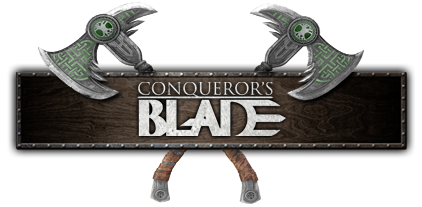Harvesting
When you extract a resource, you get an object with a concentration of 50% to 100%—the more concentrated, the better. A variety of factors may influence the concentration of the resource you extract, but a major factor will be the quality of the source; some sources produce more concentrated resources than others.
You'll have to move the resource you harvest to a settlement where it can be processed. Raw resources with higher concentrations mean less bulk to move, so the efficiency of your combined harvesting and transport operation is going to be affected by the type of source you harvest as well as other factors (some character dependent).
In your inventory (and on the market), you'll see resources in any of four increments of concentration... so, when looting a body, take the 100% concentrate before the 50%.
Processing
The concentration of a resource does not limit its use in processing jobs. When you use a resource in a processing job you just have to provide enough of the required resource to meet the job's requirements. Copper ore at 50% concentration works just as good as copper ore at 100% concentration—you'll just need twice as much of the 50% copper for the same job.
Resources are assigned to tiers, and processed components have tiers as well. There's a rough correlation between the tier of a component and the tier of the resources needed to make that component. Some components of a higher tier are produced with two or more lower-tier resources, but those are exceptions to the general rule.
Processing, at least initially, will be job-based. You visit a facility in a settlement that can do the kind of processing job you want to do, you'll wait until that facility has time to accept your job, and you'll then provide the resources required for the job, plus whatever other preconditions are needed. The job will be accepted, queued for delivery, and you then pay whatever fees are required and receive an estimate of when the job will be completed. Your character will likely not be involved in actually doing any part of the work.
At this stage, we introduce the concept of "quality." Quality is driven by your character skill and modified by a wide variety of factors. Generally speaking, you won't need to know much about how quality is calculated (but we will make that information available for those who want to eke out the maximum possible advantage!). The "behind the scenes" quality system generates variants of the components that you produce when processing resources. These variants are identified with a "+X" value. You process iron ore and coal to make steel ingots, and depending on how much iron and coal you use, your skill, the facilities you are working with, and other factors, you'll produce steel ingots +0, steel ingots +1, steel ingots +2, steel ingots +3, and so on.
In your inventory (and on the market) you'll see these processed components grouped by "+" value. When looting a body, take the highest "+" components first.
Crafting
The mechanics of crafting will work like the mechanics of processing, at least at first. You'll take a recipe and all the necessary components to a facility in a settlement that can do the work you want to do, load it into a job, and after paying necessary fees you'll be given a delivery date. To initiate certain crafting jobs you'll need to have achieved prerequisite levels of skills and you'll need to have learned the prerequisite recipes.
The crafting system gives you some control over the finished good based on the "+" variables of the components you are using. When you gain access to a recipe to craft a good, you'll also be able to see what variations of that good you can make based on the "+" of your components. Generally speaking, "+" materials add keyword slots to the finished item. For example, a steel longsword could gain the sharp and balanced keywords if the components used in the crafting job have a total of "+2" in modifiers.
Remember that Pathfinder Online items use a system of character-dependent keywords instead of the properties you might be familiar with from the tabletop game. Wielding a sharp balanced steel longsword doesn't have any beneficial effect unless the character has an ability that can use sharpor balanced items. Since you won't benefit from objects with keywords you can't use, you won't want to pay extra for items that have them, which means there will be a market for items within a given type with no, some, or many keywords. Pathfinder Online is not a game where you always want to get "the best" item and "not the best" items are trash.
We are considering the ability for crafters to use "+" modifiers to enhance the durability of an item rather than adding keywords. This would allow crafters to make a variety of goods usable by the same character with a range of prices.
Salvage
We've simplified the salvage items concept since our earlier post on this topic. We may still eventually add a system to salvage crafted items, but that has some hard-to-predict effects on the economy, in addition to requiring a fairly complex system to figure out what you should get out of an item (since they're made out of a lot of variable-quality refined items). So, that's going to come a little later.
In the meantime, salvage items are very similar to a raw material: You can give them to someone with the appropriate refining skill and they can use them just like a unit of raw goods. A refiner might throw a goblin's armor scraps in with a bunch of ore to get enough to make an ingot. Unlike raw materials, salvage items are more likely to count as two different components (for example, those armor scraps might count as ore for the smelter but leather for the tanner).
Harvesting II
All wilderness and monster hexes in the game constantly generate harvest nodes: Objects that represent small groups of resources such as an outcropping spur of ore, an especially healthy tree, a clutch of herbs, or so on. These harvest nodes appear procedurally throughout a hex, so they won't be in totally predictable spots. A central process in the hex controls how many harvest nodes appear, based on an overall supply of each potential resource in that hex. If you've been over-harvesting a resource in a hex, harvest nodes will be fewer for that resource, and may output more impure (heavier and less efficient) variants of the resource.
When you find a harvest node, your ranks in the related Profession skill determine if you can access it at all. For example, you only need one rank in Miner to harvest iron, but you need fourteen ranks to harvest adamantine. The speed at which you harvest the resource is based on your skill total; you won't ever spend more than a few seconds per item at a harvest node, but reducing that time might still be a big help if you're worried about attacks.
You have one item slot on your character for a harvesting tool (you can thread this tool if you want to). This is your standard pick for mining, axe for logging, and so on. You don't need the tool to harvest, but it adds dramatically to your effective skill total, letting you harvest even faster.
Each harvest node is only good for a very few items before it gets used up and you have to move on. However, based on the current resource totals in the hex, there's a chance that any particular harvest node might have hidden wealth: harvesting it reveals that it is, in fact, a gathering node.
Gathering
Gathering nodes are no longer large, freestanding sites that you might happen upon; as noted above, they're something you find in the course of harvesting. The chance of discovering a gathering node is based on the total supply of the resource in the hex, so they'll usually have a much greater chance of appearing deep in the wilderness in hexes (particularly monster hexes) that aren't regularly harvested. Finding a gathering node is like discovering a "gusher" or "mother lode" in prospecting slang—the harvest node was just the evidence of a much richer supply of the resource in the immediate vicinity.
Once you discover a gathering node, you'll have exclusive rights to it for a limited amount of time, after which the chance to haul in the resources from the gathering node disappears. You can't pass these rights off or have them stolen from you, either directly or by showing another player the site; if you find the gathering spot, you are the primary character that must be involved in a gathering operation there. This should keep lower-level harvesters from having their claims jumped by bandits or their own allies; if you find the node, you get to be integral to the gathering process. The window of time in which you can set up a gathering operation is fairly narrow, but usually it's enough time to run back to a nearby base and get a gathering kit, or have one brought to your location by an ally.
Once you've activated the gathering kit, all bets are off. The speed of the gathering operation is pegged to your own Profession rating, but the output goes into a nearby storage object. Not only will monsters attack in waves while you're gathering, enemy players will be able to take the items from the storage if you don't fight them off as well. Your allies won't want to force you off your find, but you'll certainly want them to help stand guard.
Gathering operations generate many more items than a harvest node, and there may be so many that you need several people to carry it all away. The upper limit to what you can gather from a single operation is based on the total resources in the hex. Like harvest nodes, gathering nodes start running on fumes when the hex as a whole has been heavily harvested or gathered.
Gathering nodes represent the highest-volume insertion point of raw materials into the game, but harvest nodes make up a much steadier supply.





















